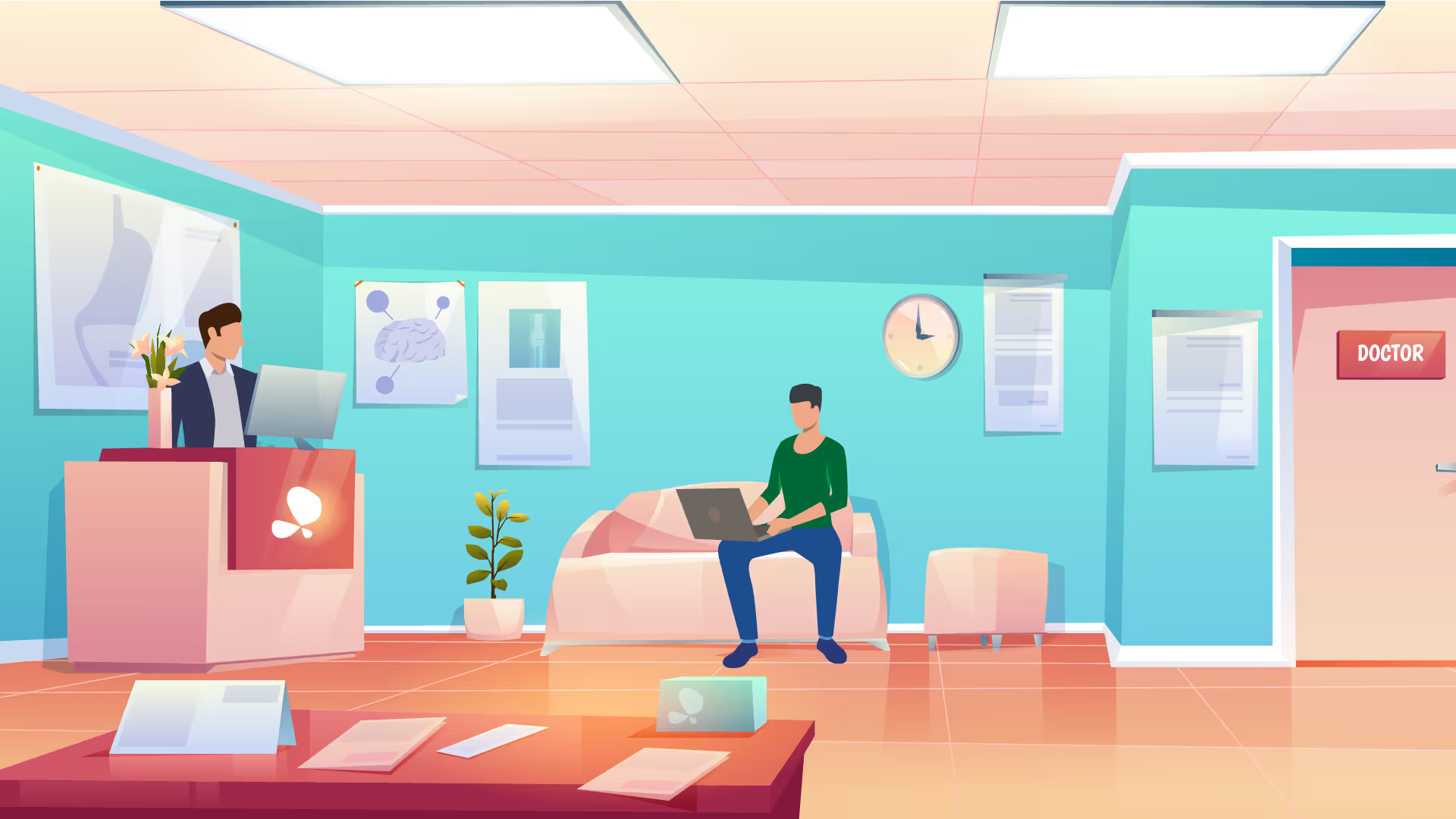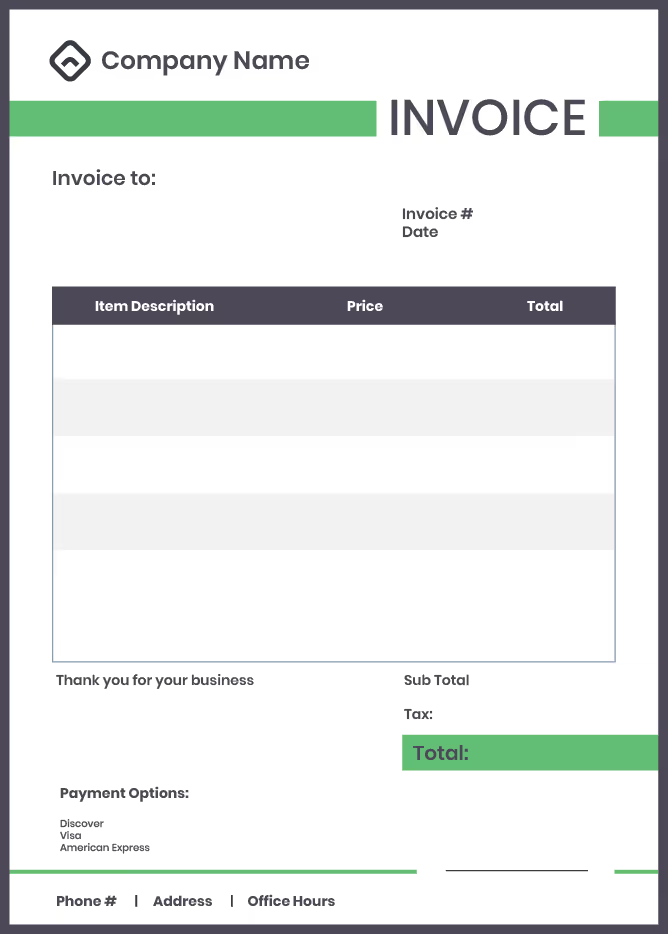The Patient Journey: How to Make Each Stop Count
Each step along the patient journey is vital to the success of your practice. If taken into account, your organization can thrive in providing the best experiences possible to your clients.

The patient journey is similar to flying. There are many different steps before reaching your destination, each one vital to the entire experience.
Some steps can make or break the passengers' flight experience, leading them to choose whether to reuse the airline or not. Certain steps in healthcare can also influence a patient’s decision to return or choose a new doctor.
Each step along the patient journey is vital to the success of your practice. If taken into account, your organization can thrive in providing the best experiences possible to your clients.
Let’s take a look at each step.
Step 1: Determination or Action Event
Before anything happens, an action event must take place. From a flight passenger’s perspective, maybe they’re traveling to…
- Visit inlaws
- Work
- Go on a vacation
- Move to a new state
The list of reasons why people fly is endless, which is part of the reason why it’s such a large industry.
Going to the doctor also requires a medical action event to take place. Maybe the patient needs…
- A diagnosis
- An X-Ray
- Testing results
- A physical
Like the flight passenger, there are thousands of reasons why a patient visits their doctor.
In either case, what’s most important is that something triggered the process to happen. That’s the first stage in the patient journey.
Step 2: Looking for The Right Place
Before booking a flight, passengers must find an airline that fits their needs. Patients must discover that you exist before even considering visiting your office for an appointment. In order to make your practice discoverable, you need to make it available.
This means that having an online presence is essential. Around 80% of people research a business online before visiting it or purchasing its services.
The same applies to health organizations. Patients want to know you’re reputable and it’s becoming increasingly harder to trust places that don’t exist online. They want to be able to trust those who diagnose them.
When your practice makes a first impression, it’s everything. Being able to find your qualifications quickly makes you more reputable.
Step 3: Scheduling the Services
After locating the right airline to use, it’s time to book a flight. Now, scheduling a flight is somewhat of a science. But scheduling appointments doesn’t have to be.
After deciding to go to your practice, patients will schedule an appointment. To make it easier for them…
- List your hours of operation on your website to let them know when your office is open
- Answer the phone with little delay
- Avoid being away from the desk during prime calling hours
People become impatient when they have to sit through many phone rings. The last thing you want is to waste your new clients’ time and send them to voicemail.
But a patient getting to your voicemail is bound to happen. Just in case, make sure that your system recites your hours of operation as well. This will help them know when to call back. Make sure to list special hours for any upcoming holidays.
This sounds like a no-brainer, but don’t overbook. Dealing with more patients than your staff causes stress for everyone. If you delay your new patients, you’ll never see them again.
Step 4: Receiving Itinerary
Passengers and patients usually book services far in advance, so they could forget when the date is approaching. Airplane companies solve this by sending out itineraries. In healthcare, you solve this by sending reminders.
These will help ensure that they remember and will help you, in the long run, reduce front-end denials.
Don’t bombard them with too many reminders but send enough between the time they scheduled and the time of service. Always keep a consistent reminder schedule.

Also, provide some way to confirm appointments. Patients may not want to call to cancel, and you don’t want a no-show since it wastes an appointment time for someone else.
Call your clients to confirm they still plan on coming or ask if they need to reschedule. Also, inform them of any cancellation or no-show penalty.
This is a good time to relay any important information about the appointment. Let them know what time they should arrive and if there is anything they need to bring to the appointment.
Step 5: Drive to The Location
Now it’s time to head to the airport, or in this case, the doctor’s office. Unlike leaving for a flight, your clients don’t have to arrive three hours ahead of their appointment. Luckily, they’ll also not have to worry about going through massive security lines.
Make sure the address is easy to find on your website, or even include it within your appointment reminders. Many people use GPS maps on their smartphones. But these systems aren’t always accurate, and they may still need to look up the address.
Also, keep in mind your client demographic. Older patients don’t always use smartphones and will look up the address before leaving.
Step 6: Arrive and Check-In
Arriving at an airport is overwhelming between the number of people and worrying about getting to your flight on time. Although they’re different, arriving for an appointment may still spike anxiety in some of your clients.
When patients walk through the door, make sure to greet them with a friendly smile. Establishing a relationship with them takes time but it truly starts the moment they walk through your doors. Address them by their first name throughout the conversation because this makes things more personable.
Be clear about any paperwork they must complete so that you receive all the necessary information.
Direct them to where they need to go from here if they seem unsure.
Step 7: Waiting
Some flights are on time, like how some patients are lucky enough to go straight back to the exam room. But this isn’t always the case. When you’re waiting at a terminal, there’s so much you can do to burn time.
Your waiting room should be an active environment. Patients don’t feel like they’re waiting as long when they have something to do. Here are some amenities you can provide to make your waiting room more welcoming…
Available WiFi
People often miss work or school for appointments; it’s a disruption in their daily lives. So offering amenities like free WiFi, plenty of outlets, and tables make the environment more welcoming to those who need to get work done.

Toys and Activities for Kids
Children can’t be left alone in the house either so sometimes parents have to bring them along to their appointments. The only problem is that kids are impatient.
An antsy or cranky kid can lead to disruptive behavior that disturbs other patients in the room. Keep some toys and books available so they stay entertained.
Snacks and Beverages
People may get hungry, especially since many appointments are during their lunch breaks. Providing snacks and beverages helps patients feel like you are taking care of them.
Personal Space
Flights are more uncomfortable when passengers must sit close together. This is also true for people in your waiting room. They don’t like being too close to others, especially if they need treatment. Structure your waiting room to give the feeling of a spacious area.
Hand Sanitizers
Hand sanitizers should always be available. Public spaces are full of germs, especially doctors’ offices where people go when they’re sick. This is more important if you have items such as toys and books that plenty of people touch.
Next in Line Signs
Another way to improve the waiting room is by informing patients of wait times. People don’t feel as anxious if they know how long they need to wait. Keep a posted schedule, much like a flight schedule, to show how much longer patients will be waiting. Or, let them know when they first come to the front desk if schedules are running behind.

Step 8: The Event
Now it’s time for takeoff as the patient heads back to the exam room. Nurses must be friendly because no one wants to deal with negativity, especially after waiting.
The plane doesn’t take off immediately after boarding - sometimes passengers wait a bit. In aviation, this stage is called taxi-ing. Before seeing the doctor, the nurse or aid will take a patient’s vitals. This takes a little bit more time and may spike nerves even more.
It’s helpful for nurses to give patients an idea of when the doctor will be in, such as if he’s finishing up with someone else or has one more patient to see first.
Again, keeping something active in the exam room helps the time pass. Having a TV or fidgets can help with this extra wait time.
Once the doctor enters, it’s important to again greet the patient by their first name to establish a relationship.
Doctors must pay attention to their client and remain engaged to show they care. Even if it’s a short visit, patients feel like the wait was worth it if the doctor is attentive and thorough.
Doctors should also provide a sense of peace by proving themselves as experts. They must share medical knowledge of the situation, solutions, and consequences. Passengers feel more safe with flight attendants who explain what to do in case of an emergency. Likewise, patients feel more comfortable when the doctor helps them understand their health.
Some passengers have never flown before, so keep information simple and ask if anyone has questions. Doctors should do the same as this will come off as more geniune.
Step 9: Post Event Conclusion
After landing, passengers may need direction if they don’t know where to go. When patients come out of the exam room, the individual at the front desk should let them know if there is anything else they need to do.
Set up a follow-up appointment if necessary, and give them a card that says the next visit date and time. Not all patients will schedule their next appointment before leaving. If this happens, record in the system to follow-up at a closer date of when they’re due for another appointment.
Step 10: Satisfaction Survey
Airlines will send surveys requesting feedback to improve future flight experiences. This satisfaction survey is also important to utilize in healthcare.
It shows that you care about their experience and want to make future visits better. They’ll feel valued by knowing that your organization wants to put forth the effort to ensure they stick around.
If you’re really interested in receiving feedback, offer incentives for completing the survey. These could be coupons for items related to your practice, a gift card upon completion, or an entry into a raffle.

Step 11: The Bill
We can’t forget about the best part of flights - the credit card bill. When you pay for a flight, this comes in the same step as booking. In healthcare, it comes after the entire process and appointment in the form of a statement.
Your practice should use statements that reflect your organization so the patient can better identify who it’s from.
The information on what’s owed and how to pay must be straightforward. Include your organization’s phone number and office hours, in case any questions arise.

Conclusion
Each stop during a patient’s journey is vital to the entire experience.
Minor details at each step along the way can influence one’s decision to use the service again.
Health organizations want recurring visitors who use their services instead of going to another practice.
There are many different ways organizations can improve each stop to boost retention. Following these tips can help clients stay at your practice.
Emphasize your product's unique features or benefits to differentiate it from competitors
In nec dictum adipiscing pharetra enim etiam scelerisque dolor purus ipsum egestas cursus vulputate arcu egestas ut eu sed mollis consectetur mattis pharetra curabitur et maecenas in mattis fames consectetur ipsum quis risus mauris aliquam ornare nisl purus at ipsum nulla accumsan consectetur vestibulum suspendisse aliquam condimentum scelerisque lacinia pellentesque vestibulum condimentum turpis ligula pharetra dictum sapien facilisis sapien at sagittis et cursus congue.
- Pharetra curabitur et maecenas in mattis fames consectetur ipsum quis risus.
- Justo urna nisi auctor consequat consectetur dolor lectus blandit.
- Eget egestas volutpat lacinia vestibulum vitae mattis hendrerit.
- Ornare elit odio tellus orci bibendum dictum id sem congue enim amet diam.
Incorporate statistics or specific numbers to highlight the effectiveness or popularity of your offering
Convallis pellentesque ullamcorper sapien sed tristique fermentum proin amet quam tincidunt feugiat vitae neque quisque odio ut pellentesque ac mauris eget lectus. Pretium arcu turpis lacus sapien sit at eu sapien duis magna nunc nibh nam non ut nibh ultrices ultrices elementum egestas enim nisl sed cursus pellentesque sit dignissim enim euismod sit et convallis sed pelis viverra quam at nisl sit pharetra enim nisl nec vestibulum posuere in volutpat sed blandit neque risus.

Use time-sensitive language to encourage immediate action, such as "Limited Time Offer
Feugiat vitae neque quisque odio ut pellentesque ac mauris eget lectus. Pretium arcu turpis lacus sapien sit at eu sapien duis magna nunc nibh nam non ut nibh ultrices ultrices elementum egestas enim nisl sed cursus pellentesque sit dignissim enim euismod sit et convallis sed pelis viverra quam at nisl sit pharetra enim nisl nec vestibulum posuere in volutpat sed blandit neque risus.
- Pharetra curabitur et maecenas in mattis fames consectetur ipsum quis risus.
- Justo urna nisi auctor consequat consectetur dolor lectus blandit.
- Eget egestas volutpat lacinia vestibulum vitae mattis hendrerit.
- Ornare elit odio tellus orci bibendum dictum id sem congue enim amet diam.
Address customer pain points directly by showing how your product solves their problems
Feugiat vitae neque quisque odio ut pellentesque ac mauris eget lectus. Pretium arcu turpis lacus sapien sit at eu sapien duis magna nunc nibh nam non ut nibh ultrices ultrices elementum egestas enim nisl sed cursus pellentesque sit dignissim enim euismod sit et convallis sed pelis viverra quam at nisl sit pharetra enim nisl nec vestibulum posuere in volutpat sed blandit neque risus.
Vel etiam vel amet aenean eget in habitasse nunc duis tellus sem turpis risus aliquam ac volutpat tellus eu faucibus ullamcorper.
Tailor titles to your ideal customer segment using phrases like "Designed for Busy Professionals
Sed pretium id nibh id sit felis vitae volutpat volutpat adipiscing at sodales neque lectus mi phasellus commodo at elit suspendisse ornare faucibus lectus purus viverra in nec aliquet commodo et sed sed nisi tempor mi pellentesque arcu viverra pretium duis enim vulputate dignissim etiam ultrices vitae neque urna proin nibh diam turpis augue lacus.


.avif)

